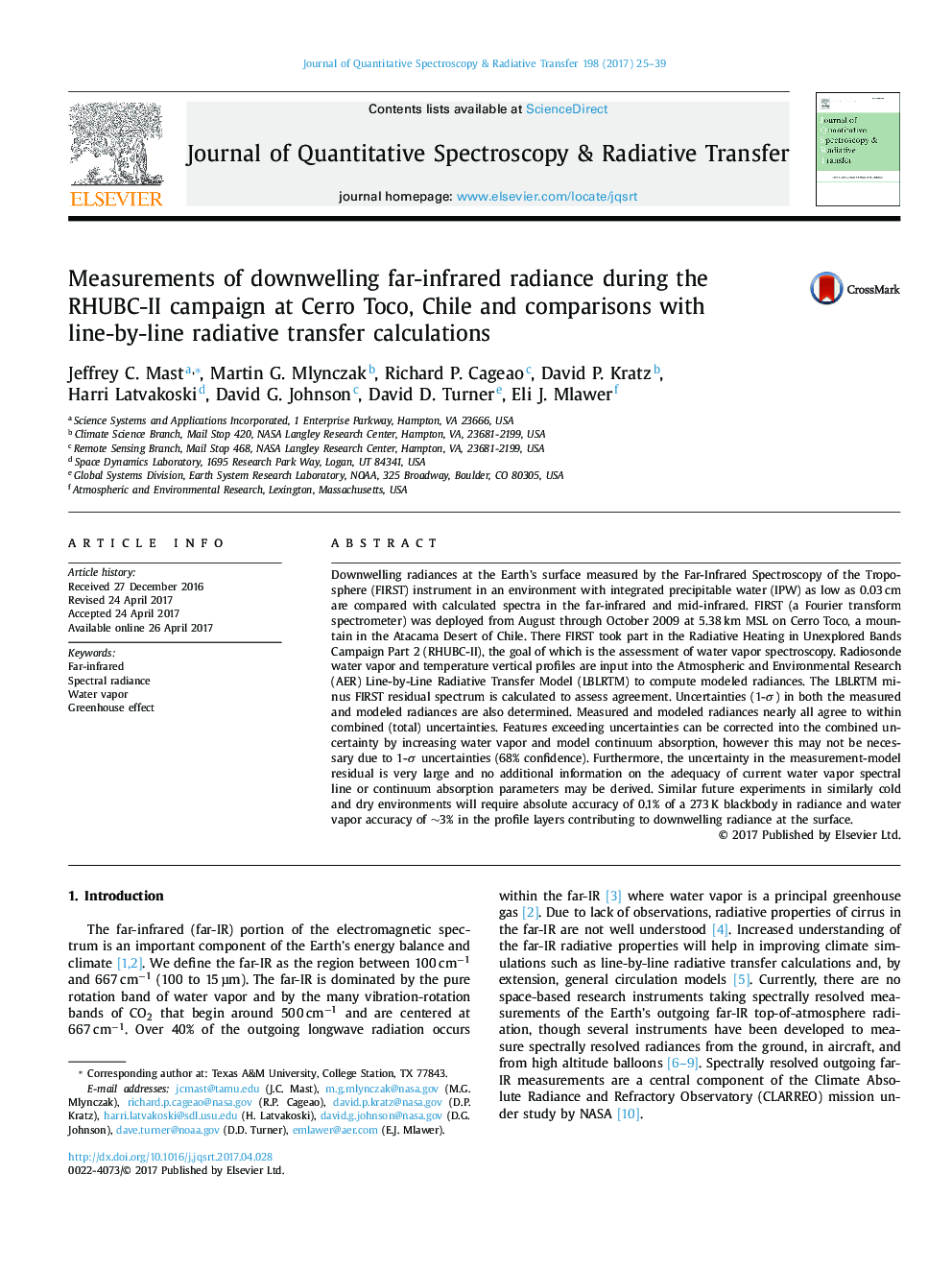| Article ID | Journal | Published Year | Pages | File Type |
|---|---|---|---|---|
| 5427118 | Journal of Quantitative Spectroscopy and Radiative Transfer | 2017 | 15 Pages |
â¢FIRST far-IR measured radiances compared with modeled radiances in dry conditions.â¢Measured and modeled spectra nearly all agree to within combined uncertainties.â¢FIRST calibration, sonde H2O uncertainty limit H2O spectroscopy improvement.â¢Measurement requirements derived to reduce H2O spectroscopic uncertainties.
Downwelling radiances at the Earth's surface measured by the Far-Infrared Spectroscopy of the Troposphere (FIRST) instrument in an environment with integrated precipitable water (IPW) as low as 0.03Â cm are compared with calculated spectra in the far-infrared and mid-infrared. FIRST (a Fourier transform spectrometer) was deployed from August through October 2009 at 5.38Â km MSL on Cerro Toco, a mountain in the Atacama Desert of Chile. There FIRST took part in the Radiative Heating in Unexplored Bands Campaign Part 2 (RHUBC-II), the goal of which is the assessment of water vapor spectroscopy. Radiosonde water vapor and temperature vertical profiles are input into the Atmospheric and Environmental Research (AER) Line-by-Line Radiative Transfer Model (LBLRTM) to compute modeled radiances. The LBLRTM minus FIRST residual spectrum is calculated to assess agreement. Uncertainties (1-Ï) in both the measured and modeled radiances are also determined. Measured and modeled radiances nearly all agree to within combined (total) uncertainties. Features exceeding uncertainties can be corrected into the combined uncertainty by increasing water vapor and model continuum absorption, however this may not be necessary due to 1-Ï uncertainties (68% confidence). Furthermore, the uncertainty in the measurement-model residual is very large and no additional information on the adequacy of current water vapor spectral line or continuum absorption parameters may be derived. Similar future experiments in similarly cold and dry environments will require absolute accuracy of 0.1% of a 273Â K blackbody in radiance and water vapor accuracy of â¼3% in the profile layers contributing to downwelling radiance at the surface.
